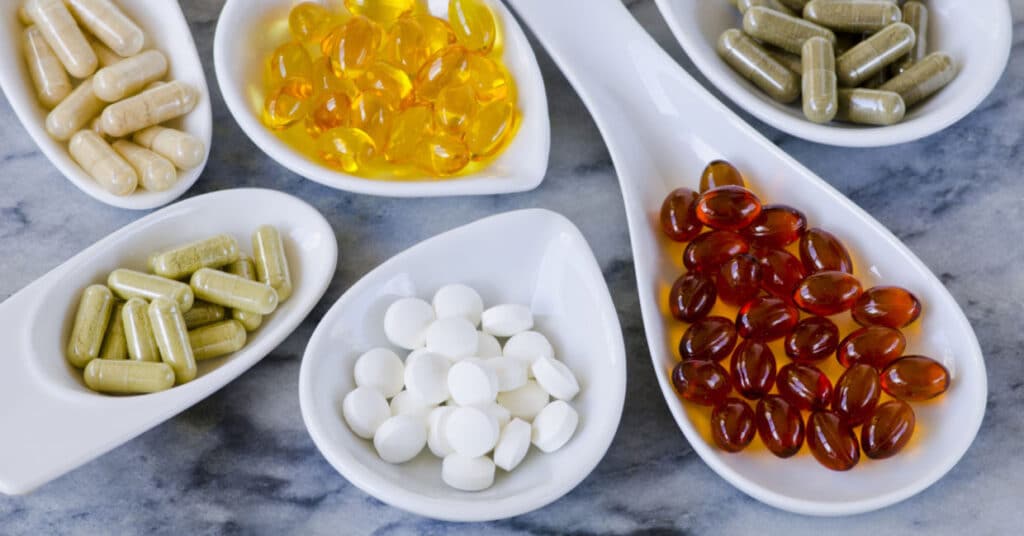Key Takeaways
- Aftercare is important for making recoveries as quick and easy as possible and ensuring the best possible body sculpting results. It’s equal parts physical aftercare and lifestyle changes specifically made for each procedure.
- The right aftercare enhances the results of advanced body sculpting. It encourages your body’s natural healing, reduces pain and discomfort and shortens your recovery time.
- Implementing high quality aftercare helps to achieve a more aesthetic result by keeping the skin elastic and firm, and allowing for sharper, more defined contours.
- Ignoring aftercare can result in complications such as infections, longer healing times, and poor aesthetic outcomes, highlighting the importance of adhering to aftercare guidelines.
- These modern body sculpting techniques like laser lipolysis, ultrasound cavitation and cryolipolysis offer highly effective non-invasive alternatives with little to no downtime. To best realize those benefits though, it’s important to understand and practice proper aftercare.
- Work with your medical team and heed their recommendations to ensure your healing process is safe, productive, and ideal. Drink plenty of water, maintain a balanced diet, wear compression garments, and skip the gym for a bit.
Aftercare is an essential part of any healing journey. With today’s techniques, recovery is much quicker, allowing you to enjoy your results sooner. There, you’ll discover a dedication to personalized care plans that help the process go seamlessly, and with reassurance.
Whether it’s cutting-edge procedures or personalized advice, the focus on superior aftercare means you’ll feel at ease every step of the way. It’s an intentional process rooted in healing. It promotes self-esteem and improves overall wellbeing.
By integrating these aftercare practices into your routine, you aren’t merely recovering—you’re thriving. Discover how these cutting-edge advancements deliver real-world value to every step of your journey, delivering more than you imagined, more often.
Join us as we explore the future of modern body sculpting for a younger, more rejuvenated you!
What Is Aftercare?
Definition of Aftercare
Aftercare is any of the steps that come after body sculpting treatments. You must clean your incision sites every day with mild soap and water. Plus, you need to commit to a few key lifestyle changes.
This means refraining from any heavy lifting or vigorous exercise for a minimum of two weeks, which is beneficial for allowing the body to heal. Aftercare is key to achieving the best body sculpting results.
It’s a key step in helping to turn all the time and money you spend on contouring procedures into long-term benefits. This dual process helps to maintain and build upon your newly sculpted appearance.
You can expect 15–25% fat loss in treated areas, with the highest fat-reduction rates associated with cryolipolysis methods.
Importance of Aftercare
Proper aftercare is essential after any body sculpting treatment, especially since aftercare can enhance your results. This approach avoids unnecessary pain and suffering while promoting a faster, easier recovery.
Most patients are back to their daily routine after just a few days with very little downtime. It’s a good idea to plan for at least 2-4 weeks of downtime after surgery, since full recovery could take several weeks.
Aftercare practices are closely connected to achieving aesthetic goals, facilitating the body’s natural healing. Follow our aftercare instructions to the letter.
Number one, schedule your first follow-up within the first 7 days post-surgery to avoid complications and end up with optimal results. Failing to provide aftercare means failing to create the best possible outcomes.
With proper aftercare, a majority of individuals are able to return to their normal lives within days, suffering few health-related consequences.
Benefits of Effective Aftercare
Faster Recovery
When done correctly, effective aftercare can drastically speed up recovery times following body sculpting procedures. Habits such as staying hydrated, consuming healthy foods, and taking medications as prescribed support the body in healing. Proper hydration aids cellular repair.
Nutrient-rich food—packed with vitamins, minerals, and whole foods—adds to recovery. Rest is a big part of it as well. Once treatment is complete, giving the body time to slowly return to home life helps prevent overexertion and aids recovery.
Techniques to reduce inflammation, such as applying cold compresses, promote tissue repair, helping most patients resume daily activities within days. Most minor side effects, such as swelling and bruising, resolve within a few weeks.
Improved Results
Following aftercare instructions produces the best results aesthetically in all treated areas. With proper care, skin elasticity and firmness are part of the equation, leading to sharper, better defined contours.
Regular aftercare increases your body’s natural regenerative powers. Combined with enhancing support, patients can reach an average of 22.5% fat reduction in treated areas after a procedure that involves cryolipolysis.
With diligence, you’ll see real, lasting fat loss after three to six months. Furthermore, by continuing to engage in a healthy lifestyle, you’ll ensure that you keep those results for the long-term.
Reduced Complications
Ignoring aftercare can result in serious complications, though with the right routines in place, these risks are greatly reduced. They reduce the risk of infection by ensuring incision sites are clean and monitored.
Benefits of effective aftercare include avoiding long-term issues such as an uneven skin texture or scarring. People appreciate having little to no downtime following their procedures.
With effective aftercare, complications aren’t a concern and full recovery is attainable within a few weeks.
1. Essential Aftercare Tips
After any body sculpting procedure, committing to a complete aftercare routine will help you heal comfortably and effectively, ensuring optimal results from your body sculpting journey.
- Follow medical advice from your healthcare provider.
- Stay hydrated by drinking plenty of water daily.
- Eat a balanced, nutrient-dense diet to help your body heal.
- Use compression garments as recommended to reduce swelling.
Follow Medical Advice
The most important thing you can do to ensure a safe recovery is listen to your surgeon’s advice. Tailored aftercare plans address individual needs, setting you up for a safe and successful recovery.
Engaging in open discussions with your healthcare provider can address any concerns, empowering your journey.
Stay Hydrated
Hydration helps flush out the toxins that the treatment has pulled out. Make sure to drink at least eight glasses of water every day.
Adequate hydration improves skin elasticity and healing, helping to decrease swelling and discomfort. It’s a minor thing, but it makes a major difference in terms of recovery.
Maintain Healthy Diet
A balanced diet is crucial to healing. Healthy foods like fruits and lean proteins help stimulate the body’s natural healing processes.
Stay away from inflammatory foods like processed foods and sugars that will only make recovery more difficult. To make sure you’re getting the most positive outcomes from your recovery, plan your meals to align with your recovery goals.
Use Compression Garments
Compression garments help decrease swelling and increase blood circulation. Follow your provider’s instructions and wear them for four to eight weeks.
These are not just fashion statements; these garments provide compression and comfort that are vital during the recovery process. When you follow provider guidelines, you’re maximizing the benefits they can offer.
Avoid Strenuous Activities
Avoid jarring activities to prevent damage to treated areas. Gentle movement such as walking or light stretching increases blood flow.
Pay attention to how your body feels as you ease back into your pre-pandemic exercise routine. This practice avoids infection and helps to ensure proper recovery.
Modern Body Sculpting Techniques
Fortunately, modern body sculpting offers plenty of innovative, effective techniques for people desiring a non-invasive solution to sculpt their bodies. These options meet everyone’s unique preferences and needs. What makes these new approaches different from traditional surgical options is the new techniques’ emphasis on effective body sculpting with little to no downtime.
Our goal is to provide dramatic results with the inconvenience of long recovery times. This approach makes it convenient for everyone to seamlessly work treatments into their hectic lives.
Laser Lipolysis
Among these, laser lipolysis, known as laser fat loss, is an effective and non-invasive way of reducing stubborn fat. This technique employs laser energy to penetrate fat cells, breaking them down while leaving the surrounding tissues unharmed.
The best part about this form of laser lipolysis is that downtime is nearly non-existent, so you can get back to your regular routine in no time. It combines the dual benefit of significant fat reduction and enhanced skin tightening, contributing to a more toned appearance.

Ultrasound Cavitation
Additionally, in ultrasound cavitation, sound waves are used to dissolve fat cells. This noninvasive, painless procedure doesn’t involve any incisions, so it’s a comfortable choice for most patients.
It’s especially useful for sculpting areas with stubborn fat deposits that are often difficult to reduce with diet and exercise alone. Aftercare is key in getting the most out of your results. It allows the body to keep adapting and reshaping well past the original treatment.
Cryolipolysis
Cryolipolysis, called the fat-freezing technique, cools targeted areas to destroy and eliminate fat cells. The modern, non-invasive body sculpting techniques of today require little to no recovery time, letting people get back to their busy lifestyles almost immediately.
It can permanently eliminate fat by up to 25% in the treated areas. You’ll begin to see dramatic changes within a few weeks or months. With proper aftercare, those results can be even more stunning, encouraging a permanent change.
Risks of Ignoring Aftercare
After body sculpting, ignoring aftercare can lead to significant risks. When you skip out on aftercare, healing takes longer, derailing your recovery progress. Providing consistent aftercare encourages tissue repair, which not only speeds up recovery time but maintains a higher satisfaction rate.
Staying patient and diligent with aftercare routines is important, as recovery from surgical procedures such as abdominoplasty can take 2-6 weeks. Swelling can go on, and without compression garments, it may go on longer than necessary.
Avoiding aftercare can lead to negative aesthetic complications, such as irregular contours. Quality aftercare is essential to achieving the sculpted and desirable silhouettes that many of these procedures promise.
For procedures such as cryolipolysis, which scrolls away as much as 25% of fat in the treated area over the course of weeks or months, aftercare is essential. Ignoring skincare after the procedure affects the way we look, leading to the possibility of permanent scarring.
Smart aftercare is the key to making sure you get the most from your body sculpting. Even a simple infection can become a serious threat when followed by inadequate aftercare and support.
Infection can be serious, even life-threatening, making the maintenance of incision sites clean and under observation critical. Aftercare helps to avoid complications such as seromas and fluid accumulation, leading to a smoother and safer recovery.
Careful aftercare habits help to protect your tattoo from infections and scarring, allowing your body to heal beautifully and effectively.
Conclusion
Aftercare is an important part of body sculpting. It ensures you will achieve maximum results and reduces recovery time. It’s a whole different ball game now with the advent of modern techniques. The even better news is that they provide safer and faster ways to reach your goals. Whether it’s a medical or cosmetic procedure, prioritizing aftercare maximizes healing and minimizes risks. It provides a shorter recovery so you can return to everyday life faster. Consider aftercare a key component of your treatment, not an add-on. It helps to ensure that you’re on a continued pathway to looking and feeling your best. If you’re looking for more tips or would like someone to help develop a plan, contact a professional. They are in the best position to provide individualized recommendations. Stay on top of your transformation. You should expect and demand a smooth and successful recovery.
Frequently Asked Questions
What Is Aftercare in Body Sculpting?
Aftercare is the name of the process immediately following your body sculpting procedure. This involves adhering to detailed aftercare instructions, addressing any pain or swelling, and returning for follow-up visits. Modern body sculpting treatments can achieve shorter recoveries and take years off your body.
Why Is Effective Aftercare Important?
Intentional aftercare following body sculpting treatments encourages a faster recovery, reduces the risk of complications, and helps achieve optimal results. This care minimizes swelling and discomfort, while guarding against infection and other complications, ensuring that the healing process of your body sculpting journey goes as smoothly as possible.
What Are Some Essential Aftercare Tips?
Some essential tips for your body sculpting journey include drinking plenty of water, wearing compression garments, and steering clear of vigorous exercise. Adhering to your surgeon’s aftercare plan is crucial to ensure optimal healing and monitor progress after body sculpting treatments.
What Modern Body Sculpting Techniques Are Available?
These modern body sculpting treatments include liposuction, CoolSculpting, and other laser-assisted body sculpting procedures. These techniques are much less invasive than traditional liposuction, providing shorter recoveries and little to no scarring, making them ideal for those seeking to sculpt their body shape.
What Happens If I Ignore Aftercare?
Complications, including infections and swellings that take months to resolve, can be more common when aftercare is not prioritized following body sculpting procedures. This neglect lengthens recovery time and may necessitate further medical intervention. Proper aftercare is essential to achieving the desired results in your body sculpting journey while taking care of your body.
How Does Aftercare Affect Recovery Time?
With the right aftercare following a body sculpting procedure, patients experience a significantly shorter recovery time. This care not only manages pain and swelling but also allows your body to heal optimally and efficiently. With a few aftercare tips, you’ll quickly return to your normal routine and enjoy your new body shape.
Can Aftercare Impact the Final Results?
Aftercare can make or break the final results of your body sculpting procedure. This is why it’s essential to follow aftercare instructions to ensure proper healing. It enhances the aesthetic and functional outcomes of your body sculpting treatments, while neglecting aftercare increases the chances of underwhelming results.











